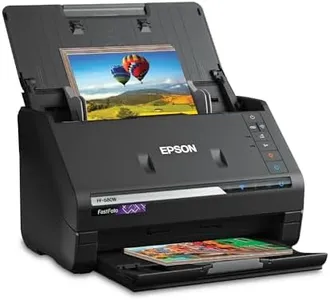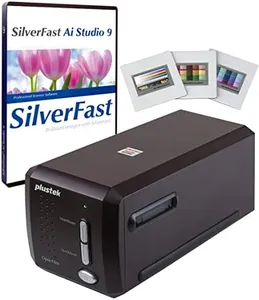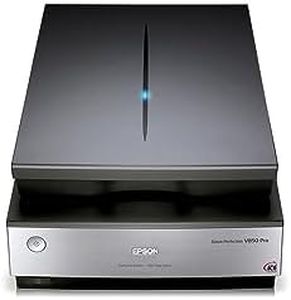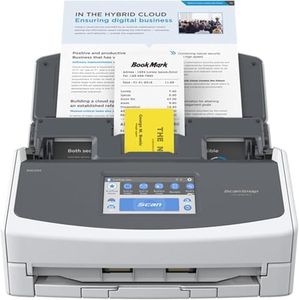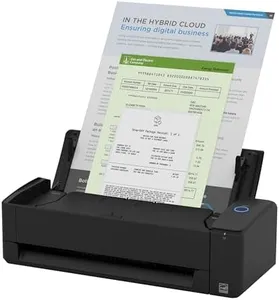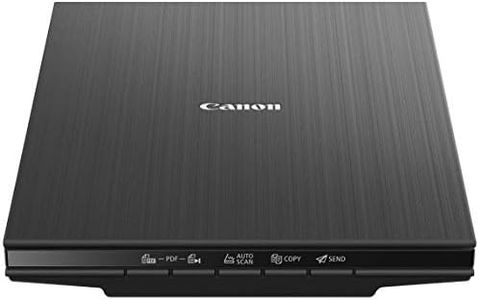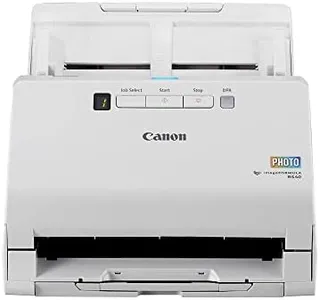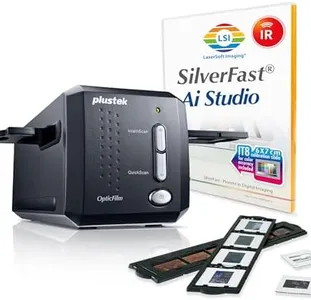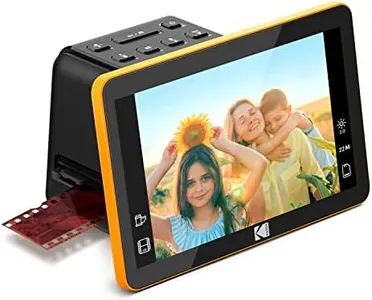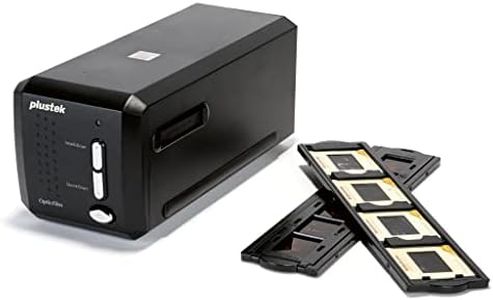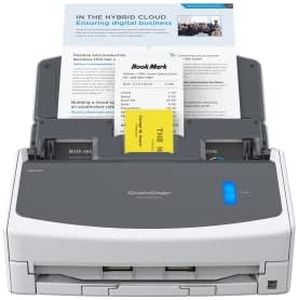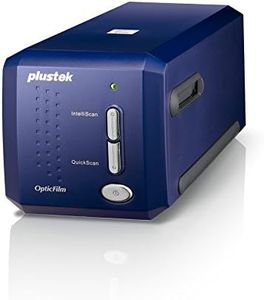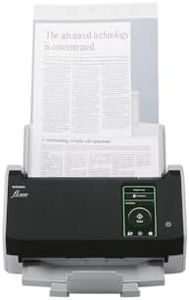We Use CookiesWe use cookies to enhance the security, performance,
functionality and for analytical and promotional activities. By continuing to browse this site you
are agreeing to our privacy policy
10 Best Picture Scanners
From leading brands and best sellers available on the web.By clicking on a link to a third party's website, log data is shared with that third party.
Buying Guide for the Best Picture Scanners
When shopping for a picture scanner, it’s important to focus on features that help you digitize your photos clearly, easily, and efficiently. Think about what kinds of photos you want to scan, whether you’re dealing with old printed photos, slides, or negatives, and how you want to use those digital copies (such as sharing online, archiving, or printing). Since scanners come with different abilities and qualities, understanding the key specifications will help you make the right choice for your needs.Resolution (DPI)Resolution, often measured in DPI (dots per inch), describes how much detail your scanner can capture. Higher DPI means better clarity and sharpness, which is especially helpful if you plan to enlarge the scanned images or keep all the fine details of your originals. Low-resolution settings (around 300-600 DPI) are usually enough for simple backups or online sharing, while higher resolutions (1200 DPI or more) are best if you need to archive photos, scan small items like slides or negatives, or make high-quality prints. Choose your DPI based on whether you want quick scans for easy viewing or detailed scans for preserving precious memories.
Scan SpeedScan speed measures how quickly a scanner can process and save one picture. This becomes important if you have a large number of photos to digitize. A faster scan speed means you’ll spend less time waiting for each photo to finish, which is helpful for bulk projects. If you’re only scanning occasional photos, speed isn’t as critical, but for batches of older family photos, a faster scanner saves time and effort.
Color DepthColor depth, measured in bits, refers to the amount of color information the scanner can capture from each image. Higher color depth means more accurate and richer color reproduction, which helps preserve the original look of your pictures. Basic scanners usually offer 24-bit color, which is enough for everyday needs, but if you want to retain subtle color variations or restore old photos, look for higher color depth like 48-bit scanning. Your needs will guide you—if you just want to share simple snapshots, standard color depth works, but for preserving and editing archival images, more color depth is helpful.
Scanner Type (Flatbed vs. Sheet-fed vs. Dedicated Photo Scanners)The type of scanner influences what kinds of photos you can scan most easily. Flatbed scanners have a glass surface and can scan almost any photo size, even fragile or thick items like albums. Sheet-fed scanners automatically pull in photos one after another, which is fast for standard-sized prints but less flexible for damaged or odd-sized photos. Dedicated photo scanners are made just for photos and often offer features like automatic correction or high speed for batches. Think about the types and conditions of your photos: if you have varied sizes or delicate images, flatbed is safer; if you want to scan lots of standard prints quickly, sheet-fed or dedicated photo scanners are more efficient.
ConnectivityConnectivity options determine how the scanner sends your images to your computer or other devices. Basic scanners typically use USB connections, which are reliable and simple. Some offer wireless options like WiFi or Bluetooth, letting you scan directly to computers, phones, or cloud storage without cables. If you prefer convenience and want to move your scanner around or scan directly to your devices, wireless connectivity is handy. Otherwise, USB works well for direct and stable connections.
Photo Handling Capabilities (Slides, Negatives, Bulk Feeder)Not all scanners can handle all types of photos. Some are designed to scan only prints, while others come with adapters for slides and negatives, opening up more options for digitizing old film. Additionally, some scanners have stackers or feeders that make it easier to scan batches of prints quickly. If you only have printed photos, basic models will do, but if you want to scan film or lots of images at once, look for models with these added features.
Software FeaturesThe included scanning software helps you correct and organize your photos. Some scanners come with built-in tools for removing dust, restoring faded colors, or cropping automatically. If ease of use and automatic corrections are important to you, pick a model with smart software features. If you enjoy handling editing yourself, advanced software features might matter less.
